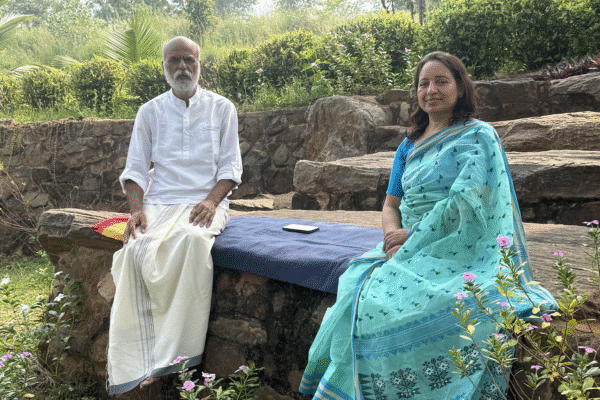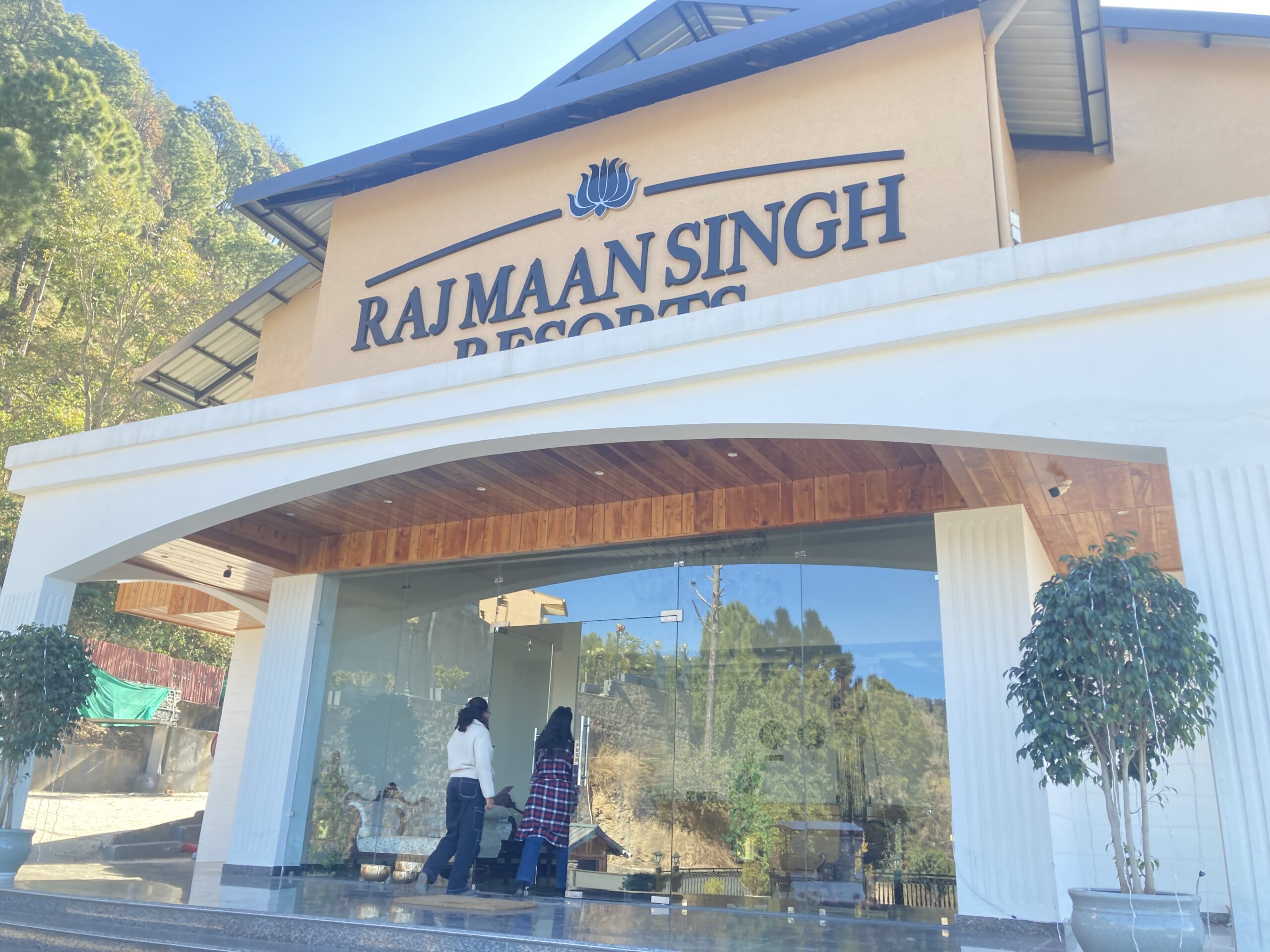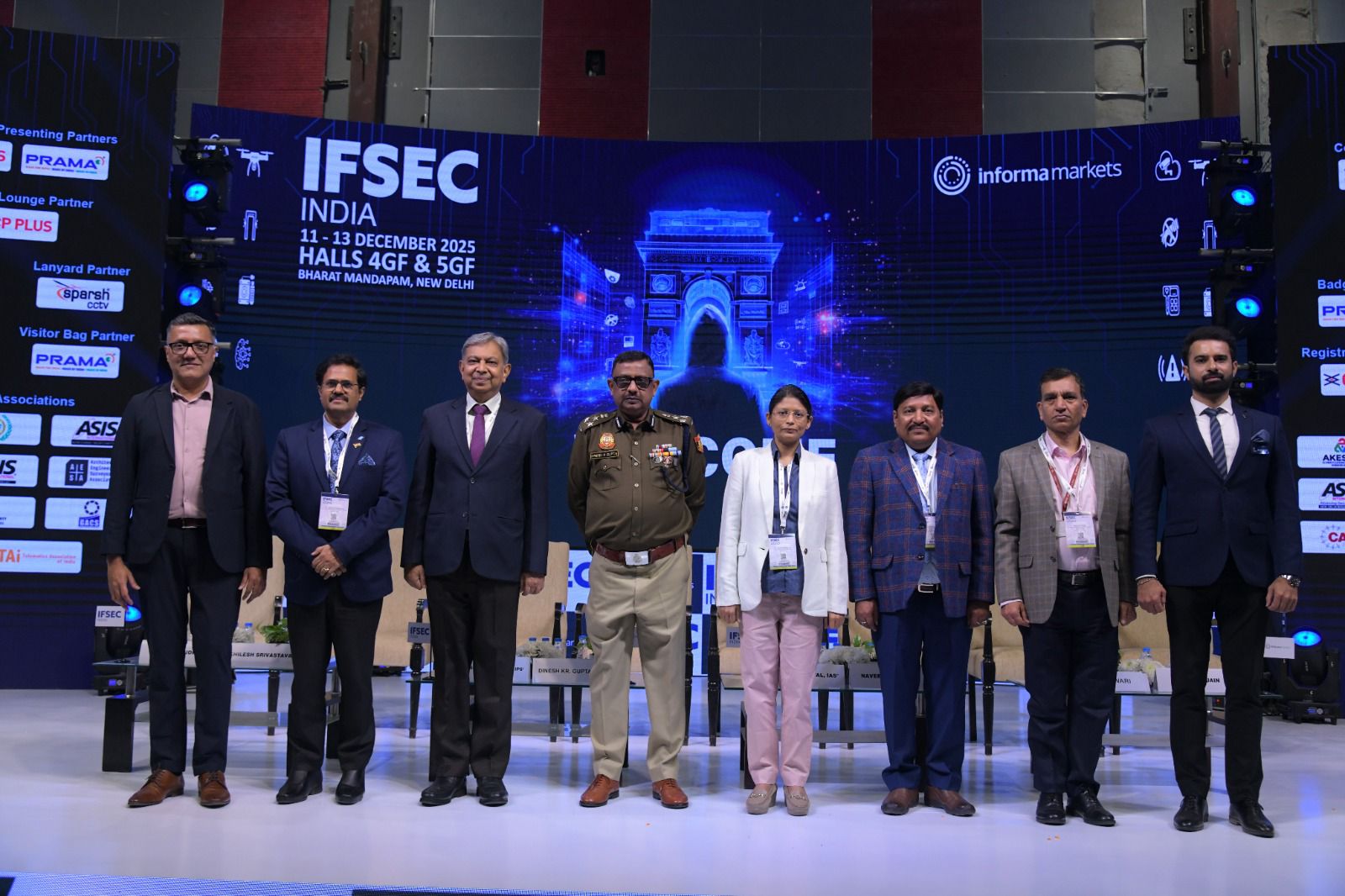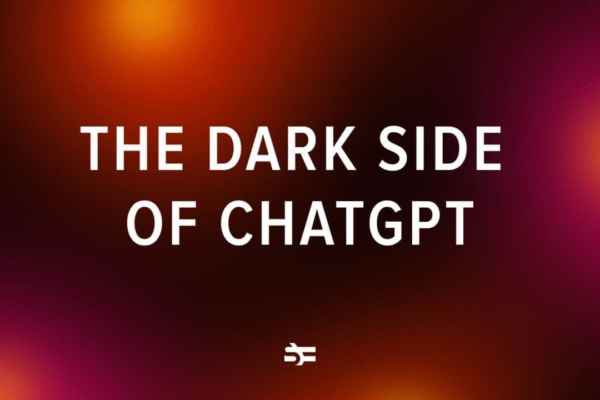
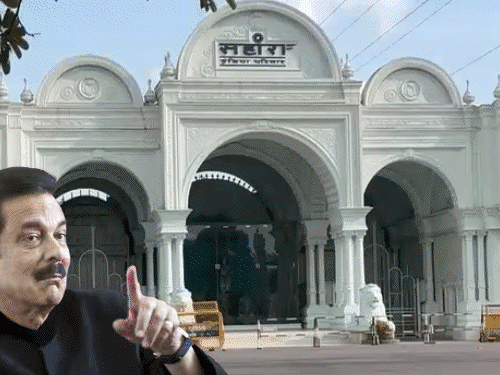
“Sahara is like a big ship. If it has a hole, it doesn’t sink immediately. But one day, it will.”
– Assistant Editor, Hindustan Times (1994)
Lucknow — The colossal gates of Sahara Shahar, once a gilded symbol of Indian corporate flamboyance, now stand locked, sealed by the Lucknow Municipal Corporation (LMC). With this symbolic action, Sahara’s fall has entered its most visible phase, turning decades of influence and wealth into a legal standoff.
On October 7, 2025, LMC officials moved decisively to seal the entire Sahara township in Gomti Nagar, citing the expiry of lease and violations of license agreements. This move wasn’t merely administrative; it symbolised the dismantling of an empire. After decades of unchecked growth, political immunity, and mysterious money trails, authorities are tearing down what once made Sahara India’s second-largest employer, brick by brick.
From “Good Sahara” to Courtroom Battles: How the Empire Lost Its Shine
At its peak, Sahara India wasn’t just a company, it represented a culture. Employees greeted one another with the phrase, “Good Sahara,” symbolising loyalty, pride, and belief in something bigger than a paycheque. But that cheerful greeting has now taken on a new, bitter meaning. Today, the “Good Sahara” has crumbled into the downfall of Sahara.
Subrata Roy, the self-styled “Saharasri,” built a kingdom from the scratch. He started with a small financial firm in Gorakhpur in 1978, then expanded Sahara into a multi-sector empire spanning parabanking, real estate, media, aviation, and hospitality. By the 2000s, Sahara employed over a million field workers across India, collecting small investments to build one of the country’s largest financial networks.

Subrata Roy, the late founder of Sahara empire (file photo)
But the empire wasn’t just about numbers; it thrived on spectacle. Lucknow’s media and political circles often said Roy led a lifestyle reflecting both affluence and indulgence. Stories circulated — not always documented but widely repeated — of his penchant for hosting celebrities and film stars.
One event remains etched in public memory: when Sushmita Sen won Miss Universe in 1994, Subrata Roy invited her to his private dock for a grand celebration. This glamorous spectacle, blending corporate power and celebrity, perfectly captured Sahara’s public image during its heyday.
I still remember what the Assistant Editor of Hindustan Times told me in 1994:
“Sahara is like a big ship. If it has a hole, it doesn’t sink immediately. But it sinks slowly. And one day, it will.”
That day seems to have come.
In 2011, the Securities and Exchange Board of India (SEBI) accused Sahara of illegally raising over ₹24,000 crore through Optionally Fully Convertible Debentures (OFCDs) without regulatory clearance. When the Supreme Court ordered Roy to return the money, he defied summons and delayed compliance. In 2014, the courts ordered for his arrest. The once-unreachable tycoon, who flew in private jets and drove in convoys, found himself negotiating bail and selling assets from behind bars.
Political Power and the Decline of the Sahara Empire
Sahara didn’t rise through business alone; it flourished on powerful friendships. Its most visible political patron was the late Mulayam Singh Yadav, founder of the Samajwadi Party. During his tenure in 1994, Sahara received prime land in Gomti Nagar, Lucknow, where it built the now-sealed Sahara Shahar township. Critics have long argued the land deal favoured political interests over merit.
For years, Sahara became a second home for UP’s power elites. Politicians, actors, and bureaucrats all passed through its marble corridors. The relationship between Roy and Mulayam Singh reportedly ran deep. Some speculated Sahara’s vast parabanking network routed political funds during election cycles, although it was not proved in courts.
Financial red flags did surface. Income Tax investigations found Sahara failed to account for over 50 major depositors. SEBI and the Enforcement Directorate alleged the use of shell companies and forged documents to launder funds. Despite years of scrutiny, no major political figure has faced conviction related to the Sahara scandals.
The support system shielding Roy vanished after his death in November 2023. In 2025 alone, the Enforcement Directorate attached over 1,000 acres of Sahara Prime City Ltd properties across 16 cities. The luxury township Aamby Valley remains under close watch. Sahara’s assets are being dismantled, piece by piece.
Currently, Sahara still owns or controls approximately 350 properties across India. Of these, around 120 properties remain on active lease agreements with government bodies or private entities, while nearly 230 properties are under scrutiny for recovery by various authorities. The government continues to move aggressively to reclaim these leased properties, aiming to recover significant unpaid dues and repossess valuable land parcels. The LMC alone is reviewing 19 Sahara properties, with many already sealed or scheduled for auction.
Yet Sahara still haunts the public imagination. It embodies both the ambition and collapse possible in India. Subrata Roy hosted Bollywood royalty, entered Ministers’ offices with ease, and sold dreams to millions of small investors. His rise was cinematic; his fall, tragic.
The courts now hold the final say. Sahara’s legal team has challenged the sealing of its Lucknow township, arguing the government bypassed due process. Hearing continues. The government insists the lease expired; Sahara claims it invested over ₹2,400 crore and deserves its day in court. The verdict will decide the fate of one of India’s most enigmatic business empires.
For a detailed breakdown of the legal clash between SEBI and Sahara, read analysis of the SEBI-Sahara case

A seasoned journalist with over 30 years of rich and diverse experience in print and electronic media, Prabha’s professional stints include working with Sahara English Magazine, Pioneer and JAIN TV and All India Radio. She has also been writing in Pioneer. She has also produced several documentary films through her self-owned production house Gajpati Communications. She is also the Station Director of Aligarh-based FM Radio Station, and the General Secretary of WADA NGO.



